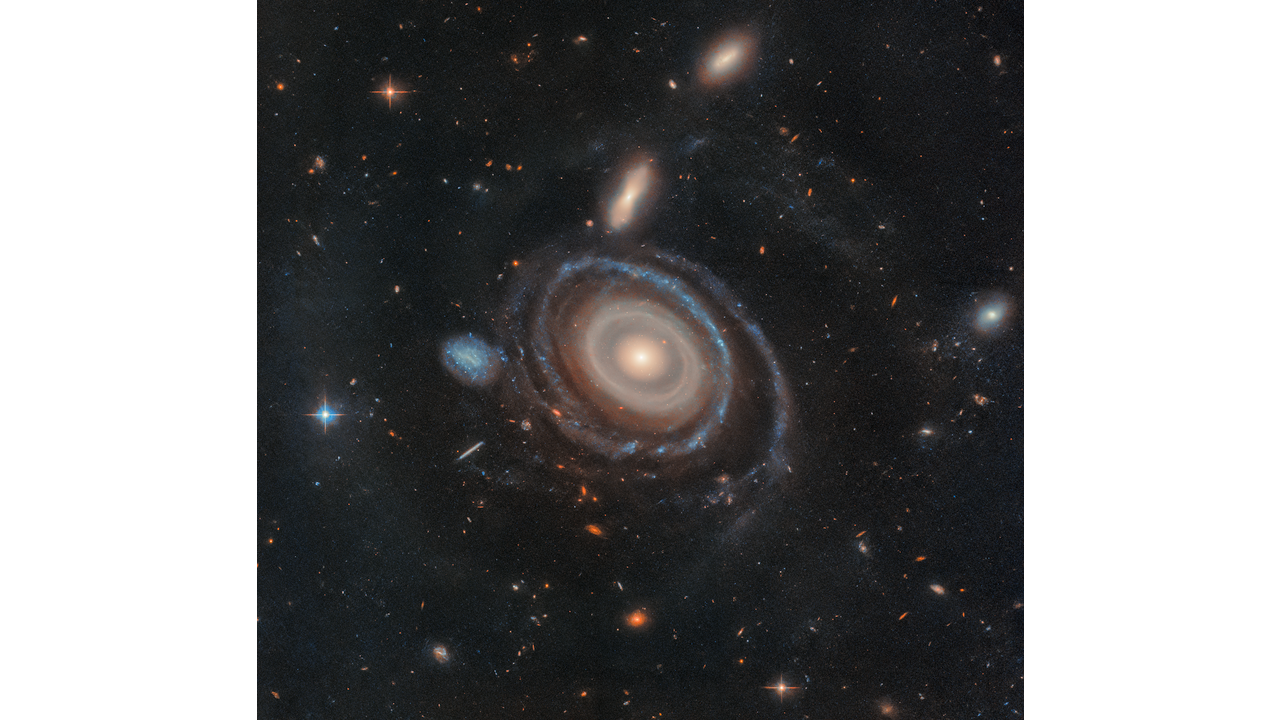NASA’s Hubble Space Telescope managed to capture an incredible image of a galaxy that looks an awful lot like a bullseye.
“This was a serendipitous discovery,” said Imad Pasha, the lead researcher and a doctoral student at Yale University in New Haven, Connecticut, in a statement. “I was looking at a ground-based imaging survey and when I saw a galaxy with several clear rings, I was immediately drawn to it. I had to stop to investigate it.”
In reality, this striking pattern formed 50 million years ago, when a small blue dwarf galaxy (visible in the image to the center-left) ploughed through the massive bullseye, formally dubbed LEDA 1313424, a galaxy nearly twice the size of the Milky Way.
Galactic collisions occur frequently in the universe, but the researchers highlight how rare it is for one galaxy to pass directly through the center of another. The blue dwarf galaxy not only left behind eight “ripples,” or star-filled rings similar to those formed when a rock breaks the surface of a pond, but also triggered new regions of star formation in LEDA 1313424. This happened as gas was ejected outward during the galaxy’s passage, mixing with dust to form new stars and brighten the rings.
The eight ripples seen by the Hubble Space Telescope in this cosmic scene marks the most ever seen in any galaxy, and data from the W. M. Keck Observatory in Hawaii actually confirmed a ninth. “This would have been impossible without Hubble,” Pasha said.
“We’re catching the Bullseye at a very special moment in time,” said Pieter G. van Dokkum, a co-author of the new study and a professor at Yale. “There’s a very narrow window after the impact when a galaxy like this would have so many rings.”
Astronomers had previously detected at most three rings in similar collisions. The team also suspects a tenth ring may have once existed but has since faded beyond detection. The researchers estimate that ring could lie three times farther out than the widest ring captured in Hubble’s image.

The Bullseye galaxy, as it is colloquially called, also supports predictions from computational models, which suggest the rings expand outward from the point of collision. “That theory was developed for the day that someone saw so many rings,” van Dokkum said. “It is immensely gratifying to confirm this long-standing prediction with the Bullseye galaxy.”
The researchers believe the first two rings in the Bullseye formed rapidly and spread out in wider circles. Subsequent rings may have formed in a more staggered manner, as the blue dwarf galaxy’s flythrough had a greater impact on the initial rings.
“If we were to look down at the galaxy directly, the rings would look circular, with rings bunched up at the center and gradually becoming more spaced out the farther out they are,” Pasha explained.
While more research is needed, this discovery will help improve modelling, and the team hopes more galaxies like the Bullseye will be found soon.
“Once NASA’s Nancy Grace Roman Space Telescope begins science operations, interesting objects will pop out much more easily,” van Dokkum explained. “We will learn how rare these spectacular events really are.”
Article by:Source:












